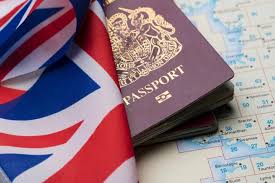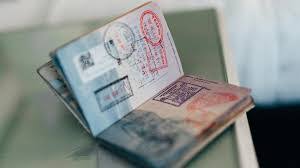
In the vibrant tapestry of global travel destinations, few countries captivate the imagination quite like India. From the majestic splendor of the Taj Mahal to the bustling streets of Mumbai, India offers a sensory feast for travelers seeking adventure, spirituality, or simply a glimpse into its rich cultural heritage. However, before embarking on this journey of discovery, one must first navigate the bureaucratic maze of obtaining a TOURIST VISA FOR INDIA.
Understanding the Basics: What is a Tourist Visa?
A tourist visa is a legal document issued by the government of India that allows foreign nationals to enter the country for the purpose of tourism, visiting friends or relatives, or participating in short-term yoga programs, among other activities. It is typically granted for a specific duration, ranging from a few weeks to several months, and comes with certain restrictions on employment and other activities not related to tourism. BUSINESS VISA FOR INDIA
Types of Tourist Visas for India
India offers several categories of tourist visas to cater to the diverse needs of travelers:
- e-Tourist Visa (eTV): Introduced in 2014, the e-Tourist Visa allows citizens of eligible countries to apply for a tourist visa online, eliminating the need to visit an Indian embassy or consulate in person. This convenient option has streamlined the visa application process and significantly reduced processing times for travelers from select countries.
- Tourist Visa on Arrival (TVoA): Similar to the e-Tourist Visa, the Tourist Visa on Arrival is available to citizens of certain countries and can be obtained upon arrival at designated airports in India. However, unlike the eTV, travelers must apply for the TVoA online prior to their arrival and complete the visa formalities at the immigration counter upon landing.
- Regular Tourist Visa: For travelers who do not qualify for the e-Tourist Visa or Tourist Visa on Arrival, the regular tourist visa is the traditional option. This type of visa requires applicants to submit their passport, application form, and supporting documents to the nearest Indian embassy or consulate for processing.
Eligibility Criteria and Requirements
While the specific requirements may vary depending on the type of tourist visa and the applicant’s country of citizenship, there are certain general criteria that must be met:
- Passport: Applicants must possess a valid passport with a minimum validity of six months beyond the intended duration of stay in India.
- Purpose of Visit: The primary purpose of the visit must be tourism, recreation, sightseeing, casual visits to meet friends or relatives, or attending short-term yoga programs. Any other activities, such as business or employment, are not permitted on a tourist visa.
- Financial Means: Applicants may be required to provide proof of sufficient funds to cover their expenses during their stay in India.
- Return Ticket: A confirmed return ticket or onward journey ticket may be required to demonstrate the applicant’s intention to leave India at the end of their authorized stay.
Application Process
The application process for a tourist visa to India typically involves the following steps:
- Online Application: For e-Tourist Visas and Tourist Visas on Arrival, applicants must fill out the online application form on the official website of the Indian government’s visa services.
- Document Submission: Depending on the type of visa and the applicant’s country of citizenship, additional documents such as passport copies, photographs, and travel itineraries may need to be submitted either online or at the visa application center.
- Payment of Fees: Applicants are required to pay the visa fees online using a credit or debit card. The fees vary depending on the type of visa and the applicant’s nationality.
- Visa Approval: Upon submission of the application and supporting documents, the visa processing time varies depending on the type of visa and the volume of applications received. Applicants are advised to apply well in advance of their planned travel dates to allow for sufficient processing time.
- Visa Issuance: Once the visa is approved, applicants will receive an electronic authorization, which must be presented upon arrival in India along with the passport containing the visa stamp.
Tips for a Smooth Visa Application Process
- Apply Early: To avoid last-minute delays or complications, it is advisable to apply for the tourist visa well in advance of the planned travel dates.
- Double-Check Documents: Ensure that all required documents, including passport copies, photographs, and travel itineraries, are submitted correctly and meet the specified criteria.
- Follow Instructions Carefully: Read the instructions provided on the visa application form and the official website carefully to avoid errors that could lead to rejection or delays in processing.
- Maintain Communication: Stay informed about the status of your visa application by regularly checking the online portal or contacting the visa application center for updates.
- Seek Assistance if Needed: If you encounter any difficulties or have questions about the visa application process, don’t hesitate to seek assistance from the nearest Indian embassy or consulate or authorized visa service provider.
Conclusion
Obtaining a tourist visa for India may seem daunting at first, but with proper planning and preparation, it can be a straightforward and hassle-free process. By understanding the different types of visas, meeting the eligibility criteria, and following the application guidelines, travelers can embark on their journey to India with confidence, ready to immerse themselves in its rich culture, history, and natural beauty. Whether exploring ancient temples, sampling exotic cuisines, or embarking on a spiritual quest, India welcomes visitors from around the world with open arms, inviting them to discover the magic of this enchanting land.





